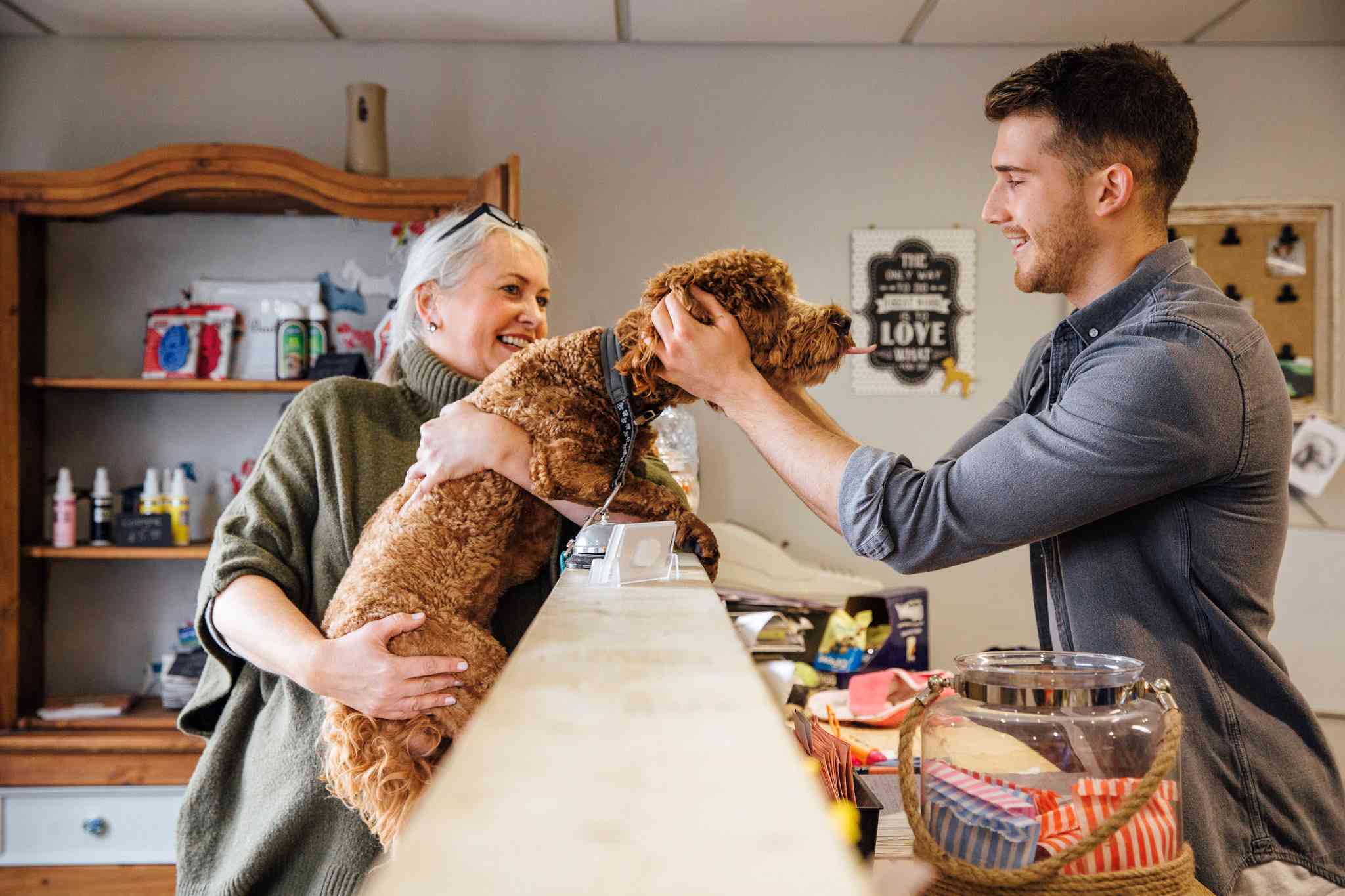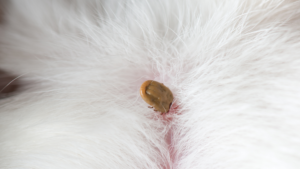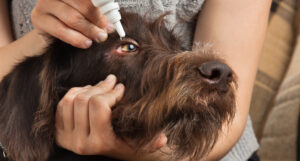With summer being peak pet adoption season, you may be thinking of adding a new member to your family. PetSure data for 2022 shows January was the month with the highest number of new pet insurance policies taken out for young animals aged 0-1 years#.
Adopting a dog is a long-term commitment, so it’s important to do your research and due diligence before making a decision.
In this article, we explore some of the key factors to consider when adopting a companion animal.
Pet healthcare costs: can you afford it?
A commonly cited reason recorded by shelters when pets are surrendered is that pet owners are unable to keep up with the cost of care^. Beyond the initial outlay of buying or adopting a pet, there are ongoing expenses associated with caring for a pet. These ongoing costs include food, routine veterinary care, training, accessories, grooming, boarding and pet insurance or planning for unexpected pet healthcare expenses.
According to the Animal Medicines Australia “Pets in Australia” report^^, the average household spend for a dog in 2022 was $3,218 and for a cat $1,715. Understanding the costs of caring for a pet throughout its entire life is vitally important.
Cost for top 10 conditions in dogs (all ages) for 2022
| Condition | Average cost for treatment of the condition* | Highest cost for treatment of the condition* |
| Skin allergies | $520 | $17,460 |
| Ear infection | $315 | $16,670 |
| Osteoarthritis | $423 | $12,255 |
| Gastritis | $523 | $28,232 |
| Diarrhoea | $416 | $20,663 |
| Lameness | $441 | $13,634 |
| Mass Lesion – Skin (Cutaneous) | $698 | $12,012 |
| Vomiting | $565 | $26,661 |
| Anal Sac Disorder | $260 | $11,021 |
| Dental disease | $706 | $11,923 |
Disclaimer: Reimbursement for these claims would be subject to limits, such as annual benefit limits or sub-limits, benefit percentage, applicable waiting periods and any applicable excess. Cover is subject to the policy terms and conditions. You should consider the relevant Product Disclosure Statement or policy wording available from the relevant provider.
* Please note that values calculated are based on all claims for that condition and medically related conditions in each calendar year.
Does breed impact pet healthcare costs?
While any dog breed can experience illness or accidents, some dog breeds may be more susceptible to pet health risks than others. This is why it’s vital to research different dog breeds to understand breed-specific health conditions, and the associated costs.
Most at Risk Dog Breeds, PetSure data 2022*
- All Bulldog breeds
- Boxer
- Cavalier King Charles Spaniels
- Bernese Moutain Dog
- Great Dane
*Prevalence = Total number of unique claiming pets/total number of insured pets (trailing 12-month period). Excludes breeds with less than 500 exposed policies in the period.
Specific breed types like Brachycephalic breeds are known to suffer from respiratory problems related to the shape of their head, known as Brachycephalic Obstructive Airway Syndrome (BOAS). This includes popular dog breeds like French Bulldogs, Bulldogs and Pugs. According to PetSure data, the highest treatment cost for BOAS in 2022 was $22,722.
Lifestyle factors
Accommodation Matters
Finding a home that accommodates pets can be tricky, especially in light of Australia’s housing and rental crisis. With accommodation often cited as a reason for surrendered pets, it’s important to consider the suitability of your housing situation and plan for potential future changes that may impact your pet.
Consider the type of accommodation and the breed of pet that will be best suited to your living environment. For those living in apartments or smaller living spaces, not all breeds are suitable. Some breeds are more adaptable to confined living conditions and will be less disruptive to neighbours. Smaller dog breeds like Dachshunds, Pugs, and French Bulldogs often adapt well to apartment living due to their smaller size and lower exercise needs. However, exercise and mental stimulation are still essential for all breeds, even in smaller spaces.
Kid-friendly breeds
If you have children or plan to start a family, consider the child-friendliness of the dog breed. Breeds like Golden Retrievers and Labradors are known for their patient and friendly natures. Consider breeds that are patient, tolerant, and good with kids and ensure that time is spent socialising your pets from a young age with people of all ages, including young children.
Check out PetSure’s Pet Health Monitor 2023 report for breed guides to see which breeds are suitable for young families.
Region and Climate
Geographical factors are worth considering when researching different dog breeds, especially if there are extreme weather temperatures or conditions in your area. For instance, brachycephalic and arctic/very long coated breeds including British, Australian Miniature and French Bulldogs, Dogue De Bordeaux, Staffordshire Bull Terrier, Cavalier King Charles Spaniel and Chow Chows were in the top 10 breeds that suffered from heat stroke according to PetSure claims data in 2022.
Some areas may also be more susceptible to ticks which may increase the risk of tick paralysis for your pet. Although any breed of dog can be affected by tick paralysis, in 2022 the top dog 5 breeds treated for tick paralysis included the Soft Coated Wheaten Terrier, Airedale Terrier, Australian Silky Terrier and Tibetan Spaniel which are long/wire coated breeds. It may also be harder to detect parasites like paralysis ticks in longer coats, which may be a factor to consider when choosing a dog breed.
Multiple Pets
Adding another pet to the mix can be a joyful experience, but just like humans sometimes personalities clash which lead to distress, injury and in some cases, surrendering pets. One way to help mitigate this is to allow your existing dog to meet the prospective new dog prior to adoption. Many shelters will accommodate such a request, and even encourage it to help ensure the perfect fit.
Another factor to consider is whether to adopt multiple dogs together at the same time. Dogs thrive from company, and typically don’t like being alone, so if you are away from the home a lot, adopting two dogs may be something to consider. Of course, multiple pets increase your expenses and can affect things like your ability to live in an apartment so this needs to be factored into the equation too.
Breed specific factors
Exercise requirements
Different dog breeds have different energy levels and exercise requirements. While some breeds, such as Border Collies, Labrador Retrievers and Kelpies thrive on vigorous physical activity, others like Bulldogs or Cavalier King Charles Spaniels are more laid back. The size of the dog is not always the best indicator of activity levels, as in the case of the Jack Russell Terrier and other terriers who are small but highly energetic.
Age
The age of the pet is also a factor to consider, with puppies and younger dogs naturally being more excitable, curious, and energetic than senior dogs. For all dogs (excluding those with medical reasons that may restrict their activity level), there will be a minimum requirement of a daily walk. It’s important to match your lifestyle and activity level to a breed that suits your fitness level, to provide enough exercise to keep your pet mentally and physically stimulated.
Breed Temperament and Personality
Understanding a breed’s temperament and personality traits is essential to ensure compatibility with your family and lifestyle. Some breeds are independent while others are highly social and eager to please.
If you want an affectionate dog, breeds like the Cavalier King Charles Spaniel or the Shih Tzu might be a good fit. On the other hand, if you value independence, breeds like the Basenji or the Scottish Terrier may be more suitable.
Grooming Requirements
Different breeds have varying grooming needs. Long-haired breeds, such as the Afghan Hound or the Maltese, often require frequent brushing and professional grooming to maintain their coat’s health and appearance. Short-haired breeds may shed less but still need regular care.
Non or low shedding pets like Cavoodles have become an increasingly popular option, however not shedding is only part of the equation. Dogs that don’t shed may need professional clipping or very frequent brushing, which comes at an additional financial or time expense.
Consider how much time, effort, and expense you’re willing to invest in grooming when choosing a dog breed.
When buying or adopting a new pet, doing your research is key to ensure you’re prepared for a long-term commitment. Speaking to experts including veterinarians and animal behaviouralists, and turning to reputable online sources, is a good way to gather information so you can make an informed decision that’s right for you and your lifestyle.
References:
#PetSure gross sales by pet age cohort, for the 2022 calendar year January was the month with the highest number of sales for new animals aged 0-1 years
^ https://www.rspcasa.org.au/pet-surrenders-2018/
Animal shelters overflowing as cost-of-living pressures prompt record pet surrenders
Surrendering your pet: What you need to know
Top 8 reasons people surrendered their pets in 2018 – and what they could have done instead
Pet insurance can help by covering a portion of the eligible vet bill if the unexpected happens. Because it is difficult to predict the costs of veterinary care, it can help to have measures in place to help prepare for the unexpected. Check out our partner network and explore our policy tools to find a pet insurance policy.
Not all conditions or items are covered by Pet Insurance. Refer to the applicable Product Disclosure Statement for information about coverage and exclusions.








